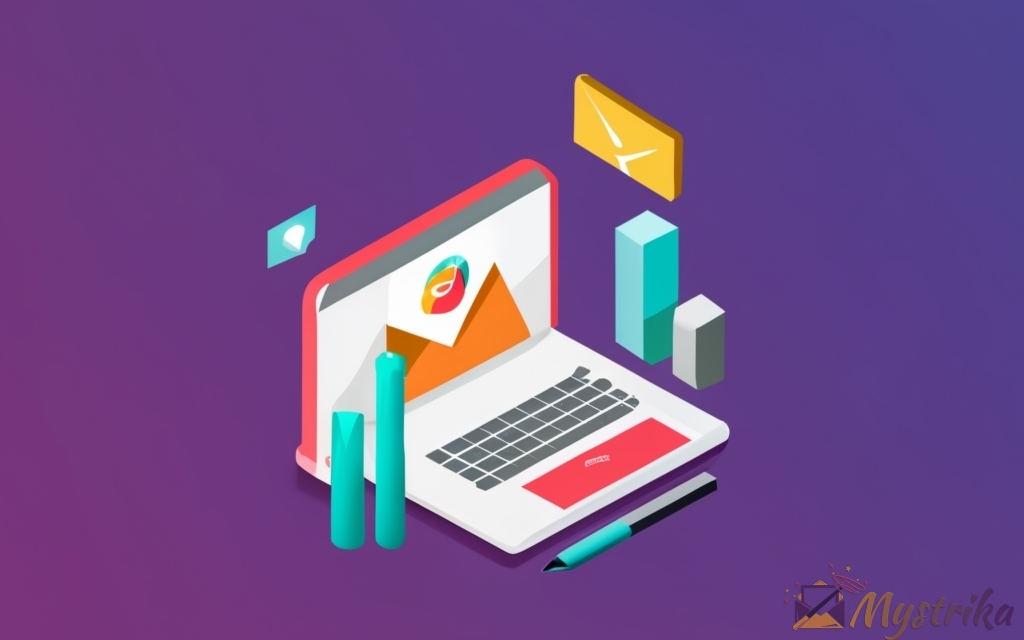Sending cold emails is a lot like climbing Mount Everest – it’s hard, requires perseverance, and many don’t make it. But for those who do summit that mountain, the payoff is huge.
The same goes for cold emailing. It’s not easy and takes real strategy to do it well. But with the right preparation and gear (tools), you can plant your flag atop that inbox and reap the rewards.
In this complete guide, we’ll equip you with everything you need to create that winning cold email marketing strategy. You’ll learn how to craft compelling emails, optimize deliverability, analyze performance, and continuously improve your approach.
By the end, you’ll be prepared to take on the mountain of cold email marketing and come out on top. No advanced mountaineering skills required – just bring your dedication and some warm gloves.
The journey up Mount Inbox starts now! Let’s begin…
What is Cold Email Marketing?
Cold email marketing is one of the most misunderstood yet effective marketing techniques today. Let’s clear up exactly what it is, how it differs from regular email marketing, and whether it’s legal.
Definition of Cold Email Marketing
Cold email marketing involves sending unsolicited, targeted emails to potential customers or clients you have no prior relationship with. The goal is to introduce your business, product or service with the aim of generating a new lead or sale.
This differs from regular email marketing, where you are messaging contacts who have already opted-in or subscribed to receive communications from you. With cold outreach, you are proactively targeting people outside of your current network.
Some key characteristics of cold email marketing:
- Emails are sent to targeted prospects who have not subscribed or opted-in
- Attempts to initiate new business relationships
- Very cost effective compared to other marketing channels
- Success depends on careful targeting, personalization and compelling messaging
Cold email is essentially the email version of cold calling. But unlike cold calls, cold emails are relatively unobtrusive for recipients and easier for senders to automate and scale.
Here are some examples of common cold email marketing campaigns:
- A startup sending emails to venture capital investors they don’t have a relationship with, seeking funding
- A B2B sales rep emailing high-value prospects identified through research
- An SEO agency reaching out to local businesses who need help improving their web presence
- A freelancer emailing prospective new clients they haven’t worked with previously
- A recruiting agency messaging potential unconnected job candidates
The focus is always on initiating new business, so cold emails should provide value and clearly explain how the sender can solve a problem or meet a need for the recipient. Spammy sales pitches without context tend to perform poorly.
How it Differs from Regular Email Marketing
There are a few key differences between cold email marketing and general email marketing:
| Cold Email Marketing | Regular Email Marketing |
| Targets people outside your network | Targets subscribers who opted-in |
| Outbound prospecting | Inbound marketing |
| Attempts to establish new relationships | Strengthens existing relationships |
| Higher focus on personalization and relevance | Relies more on existing brand affinity |
| Lower open and response rates | Higher open and response rates |
| Volume-based | Needs continuous list growth |
| Spam risks require more deliverability focus | Lower spam risks |
As you can see, the target audience is quite different between cold email and regular email campaigns.
With cold outreach, you are essentially trying to break through the noise to capture the attention of complete strangers. This requires very precise targeting, extensive personalization and truly compelling content.
With inbound email marketing, you already have a warmer audience that has some level of existing brand awareness or affinity. So your focus is more on providing great content and offers to nurture relationships. Deliverability factors are less of a concern with subscribers that already know you.
Cold emailing also tends to be higher volume – you want to reach a large number of prospects to achieve revenue goals. So list growth is critical.
With inbound email, you want to continually grow your list too, but the focus is more on keeping existing subscribers engaged rather than just expanding reach.
Is Cold Email Marketing Legal?
One of the biggest concerns around cold email marketing is – is it legal? Or is it just spam?
The answer is yes, cold email marketing is legal in most countries, provided some important guidelines are followed:
- Comply with anti-spam laws – In the US, this is the CAN-SPAM act. Most countries have their own versions. These laws require commercial emails to have opt-out links, sender info, and prohibit deceptive subject lines.
- Honor opt-out requests – Recipients can opt out of receiving future emails. You must respect their wishes.
- Use accurate from names/emails – Don’t disguise who the email is coming from. Spoofing sender details is illegal.
- Have legitimate contact info – Provide your real business name, address, contact info so recipients can verify you.
- Target carefully – Blindly mass blasting irrelevant, generic messages violates many anti-spam regulations. Make sure your lists are highly relevant to your offer.
- Avoid misleading content – Deceiving recipients with false claims or misrepresented offerings in order to generate clicks is illegal in most jurisdictions.
The Federal Trade Commission (FTC) provides guidelines for complying with the CAN-SPAM act in the US. These are good best practices to follow even outside the US.
So in summary – cold email is legal and distinct from pure spam, provided you follow some common sense rules around transparency, honesty, and careful targeting when messaging consumers.
True spamming, on the other hand, often exhibits deceptive and illegal practices like:
- No way to unsubscribe or opt out from future emails
- Disguised or misleading sender details
- Selling email lists without consent
- Using deceptive headlines and content
- Automatically scraping addresses without permission
- Sending irrelevant, untargeted generic messages
- Purchasing poor quality, unknown email lists
While cold emailing does send unsolicited commercial messages, it avoids these shady practices that characterize actual spam. Legitimate cold email focuses on transparency, relevance, and honest business practices.
So with the proper precautions, cold email marketing is completely legal and can be far more effective than spammy approaches.

Developing an Effective Cold Email Strategy
Now that we understand what cold email marketing is, let’s explore how to create an effective cold email strategy.
There are a number of important steps that combine to comprise a successful approach:
Step 1 – Research Your Target Audience
The first step is gaining a solid understanding of who you want to target with cold emails by researching your ideal customer profile.
The better you understand your target audience, the better your emails will resonate. Spending time upfront doing audience research pays major dividends in email performance down the road.
Some key ways to learn about your ideal customers include:
- Developing buyer personas – Create fictional representations of your ideal customers based on common attributes like demographics, challenges, goals etc. Helpful for getting into the mindset of who you are messaging.
- Leveraging firmographic data – Use business data providers to analyze company attributes like industry, size, technologies used and more to build your contact list.
- Leveraging demographic data – Analyze individual demographic attributes like seniority, role, location, gender, age etc to further refine your prospect targeting.
- Connecting on social media – Review social media profiles on networks like Twitter and LinkedIn to find interests, priorities and pain points common among your targets.
- Finding sources of truth – Subscribe to your prospective targets’ blogs, listen to podcasts they produce, read articles they publish to gain first-hand insights into how they think.
- Talking to customer-facing teams – Your sales, customer success and support teams often have invaluable insights into buyer needs, objections and motivations.
Put in the work here early on, and you’ll be able to craft emails that really speak to the goals and priorities of each recipient.
Step 2 – Build Targeted Email Lists
Armed with knowledge of your ideal customers, the next step is identifying specific individuals matching that profile to reach out to via cold email.
Some of the most effective tactics for building targeted prospect email lists include:
- Searching business data platforms – Services like ZoomInfo allow searching for contacts by attributes like job title, department, seniority, and more.
- Tapping your networks – Tap your connections on LinkedIn and other professional networks to request introductions to relevant prospects.
- Attending industry events – Conferences and trade shows provide opportunities to collect business cards and connect in person before emailing.
- Using email finding tools – Tools like Hunter, RocketReach, and Tomba can help find email addresses from domains.
- Visiting websites – Company sites often have staff directories, contact pages, and lists of executives you can pull emails from.
- Purchasing lists – Curated lists of contacts targeted to your audience can be purchased from reputable B2B data vendors.
The key is focusing your prospecting on finding likely prospects at companies matching your target firmographic profile. Also prioritize accuracy and relevance over raw volume of contacts.
Purchased lists can provide a starting point but often have lower accuracy than self-gathered contacts. Verify any externally sourced data.
Once you’ve compiled your list, verify the email addresses and remove invalid ones using a free email verification tool. This helps maximize deliverability when it comes time to start sending.
Step 3 – Set Up Your Emails for Success
With a targeted contact list assembled, the next key step is optimizing your email setup for deliverability before blasting your first cold emails.
Some important email setup best practices:
- Use a professional email domain – Avoid free, consumer-grade domains if possible. Paid domains like @yourcompany build credibility.
- Proper authentication – Ensure SPF, DKIM and DMARC protocols are properly set up and validating for your domain. This verifies you as the legitimate email sender.
- Gradual account warm up – Slowly ramp up sending volume when starting with a brand new account to avoid overly aggressive spam filters.
- Clean email lists – Routinely verify and remove invalid emails to minimize hard bounces, which hurt sender reputation.
- Add opt-out links – Provide one-click unsubscribe links in your emails as required by CAN-SPAM and other regulations.
Following email best practices helps maximize the chances your cold emails reliably reach the inbox vs. landing in spam or being blocked outright. Deliverability will be covered more in-depth later in this guide.
Step 4 – Craft Compelling Emails
Now it’s time to put together your cold emails. Well-crafted, relevant messages are critical for cutting through the noise.
Here are some tips for creating effective cold emails:
- Personalize the subject line – Include the prospect’s name, company, or other unique detail. Avoid generic, spammy sounding lines.
- Explain your value fast – Summarize in the first line or two how you can specifically help them or why they should care.
- Focus on benefits for the prospect – Keep the emphasis on their needs and goals, not your product features.
- Make it scannable – Break up dense text with bullets, numbers, section headers and callouts.
- Include a clear CTA – Close with a specific call-to-action, like scheduling a call or visiting your site.
- Leverage mail merge – Personalize with merged fields like first name, company, role, interests etc.
- Tell a compelling story – Educate prospects on their problem, then explain step-by-step how your solution helps.
- Adjust messaging based on persona – Tailor your messaging, offers and style based on the prospect’s role, seniority, industry etc.
- Use visuals wisely – Include images/graphics if they enhance the message (but avoid cheesy stock photos).
The most effective emails focus on benefits for the recipient and use personalization to feel like a one-to-one message vs. a cold, batch send.
Step 5 – Optimize Timing
When you schedule and send your cold emails also significantly impacts performance. You want to ensure emails hit inboxes at a time when recipients are most likely to open and engage with them.
Some best practices around timing:
- Test different days/times – Pay attention to open and click rate data to determine when your targets are most active and engaged.
- Avoid early mornings/late nights – Most engagement happens during typical business hours for your recipients’ time zone(s).
- Factor in time zones – If prospecting nationally or globally, account for time zone differences so emails arrive during the workday.
- Spread campaigns over multiple days – Draw sends out over days or weeks rather than blasting everything at once.
- Pause on weekends – In general, fewer people check email on Saturdays and Sundays.
Testing and tracking different send times is easy if your email tool allows campaign scheduling. The open and response rate data will show you when your targets are engaging most.
Step 6 – Simulate One-to-One Emails
Even though you’re blasting your cold emails en masse, you want each message to feel like a personal, one-on-one email just to the recipient.
This helps improve deliverability, boosts open rates, and increases the chances of a reply. Here are some techniques to simulate individual emails:
- Send follow-ups and re-engagement emails as threaded replies rather than new messages. This mirrors how you’d manually follow up with an individual prospect.
- Include select conversation history – past messages between you and the recipient. Again, just like a real back-and-forth conversation.
- Avoid obvious mass email artifacts like shared click tracking domains. These can raise red flags. Use a custom tracking domain or disable click tracking.
- Throttle send speed by adding a slight delay between each email send rather than blasting everything simultaneously. This mimics individual sending cadence.
- Use embedded images in your emails rather than linking out to externally hosted images. Individual emails typically embed images directly.
- Mirror gaps between replies – If someone responds, wait a bit before replying vs responding instantly like software.
Basically, mimic as much as possible the one-off manual sends you’d do out of your personal inbox. This helps emails bypass spam filters and feel more personal.
Step 7 – Follow Up Extensively
You likely won’t get many responses to your initial cold email blast. Expect only 1-3% response rates on the first send.
That’s why structured follow-up is essential to cold email success. The fortune is in the follow-up, as they say.
You need to set up your campaigns for:
- Automated follow-up sequences – 3+ email follow-ups sent a few days apart if no response to your initial outreach.
- Triggered re-engagement sequences – Send new messages if recipients open your email or click a link but don’t respond.
- Personal, prompt replies – Personally and quickly respond to all prospect replies to start building rapport.
- Moving conversations to phone/Zoom – Transition engaged prospects off email to a more personal medium like phone or video.
- Extended nurturing – Keep sending value and insights over an extended period to warm up cold prospects.
Relentless yet organized follow-up is what converts cold outreach into tangible pipeline and revenue. Don’t be afraid to contact recipients 4-6+ times through varying channels.
Step 8 – Continuously Analyze and Optimize
With every cold email campaign, you should be collecting engagement data and using it to refine and improve your approach over time.
Some key metrics and techniques to incorporate:
- Open/click/response rates – Measure engagement across every send to assess list quality, messaging, timing and more.
- Unsubscribe and complaints – Reduce inactive contacts and spam flags to improve future delivery.
- Win/loss analysis – Review why some leads converted or didn’t to identify what works.
- A/B testing – Test email variations against each other to determine what resonates best.
- Spam testing – Use tools like MailTester to catch issues before sending.
Apply everything you learn through data to continually improve list quality, send times, email copy, follow-up cadence and all other facets of your cold email efforts. This iterative optimization is key for maximizing the ROI from your cold outreach.

Email Deliverability – Avoiding the Spam Folder
Deliverability is one of the most crucial elements of effective cold email marketing.
If your emails consistently end up in the spam folder or get blocked altogether, your campaigns will flop no matter how strong your messaging and audience targeting are.
Deliverability refers to your ability as a sender to reliably have your cold emails arrive in the primary inbox tab for your recipients.
Many interconnected factors influence overall deliverability and inbox placement:
Let’s explore the key elements that impact deliverability for cold email.
Main Factors That Influence Deliverability
- IP Reputation – IPs acquire “reputations’ based on past sending activity. IPs with good reputation deliver to the inbox. Blacklisted IPs hit spam or get blocked entirely.
- Domain Reputation – Similar to IP reputation, domains build a reputation based on the emails historically sent from them.
- Email Authentication – Proper SPF, DKIM and DMARC setup verifies your right to send on behalf of your domain.
- Email Content – Spammy text, images, links and attached files hurt deliverability. Clean content helps.
- Engagement Metrics – Open, click and reply rates signal relevance to recipients. Low engagement hurts future delivery.
- Complaints – Recipients complaining your email is spam directly hurts your sender reputation.
- Bounce Rate – Hard bounces (invalid email addresses) hurt your sender score. Soft bounces (full inboxes) are less impactful.
IP and domain reputation carry significant weight in inboxing. Pristine, dedicated IPs and domains used exclusively for cold email are ideal. Avoid shared IPs.
Email authentication via SPF, DKIM and DMARC confirms your identity as the legitimate sender, boosting credibility.
Spammy content like suspicious links, unbelievable claims, tacky images and spammy text will trip up spam filters and lead to spam folder placement.
Low engagement metrics signal to email providers that recipients don’t find your emails relevant. As a result, future emails are more likely to miss the inbox.
Complaints (spam reports) and bounces (invalid email addresses) directly hurt your sender reputation, potentially leading to blacklisting if too high.
Bounce Rate – Hard bounces (invalid email addresses) hurt your sender score. Soft bounces (full inboxes) are less impactful.
Optimizing each area is crucial to ensure your cold emails reliably land in the primary inbox vs filtered folders or blocked entirely. Deliverability is complex and evolving, but following best practices helps tremendously.
Tips to Improve Inbox Placement
Here are some best practices to maximize inbox delivery:
Properly Warm Up New Accounts
When starting fresh with a new IP address or sending domain, gradually ramp up daily sending volume vs blasting thousands of emails immediately. Sudden high volume from a new sender signals risk to ISPs.
Verify and Clean Email Lists
Routinely scrub your contact lists to remove invalid, misspelled email addresses. Hard bounces from bad addresses directly hurt your sender reputation.
Check SPF, DKIM and DMARC Authentication
Ensure these protocols are properly set up for your domain and validating correctly. This digitally authenticates your right to send mail on behalf of your domain.
Avoid Spam Trigger Words and Content
Stay away from hyperbolic claims, aggressive sales language, spammy terms and suspicious links. Keep messaging conversational.
Monitor Complaint and Bounce Rates
Watch your complaint rate and bounce rate closely. Reduce complaints by improving targeting and content. Remove bounced addresses from your lists.
Increase Engagement
Work to boost open and click rates by refining targeting, content, subject lines and send times. Higher engagement improves reputation.
Use a Dedicated IP
Avoid sharing IPs if possible – their reputation impacts you. Dedicate an IP just to your cold email campaigns for optimal control.
Send From a Professional Domain
Avoid free domains. @yourcompany looks more reputable than @gmail or @outlook.
Test with a Spam Analysis Tool
Use a spam testing tool like MailTester to catch issues before sending campaigns.
Monitor Your Sender Score
Services like SenderScore provide your IP and domain reputation details and stats.
Scrub for Blacklist Status
Use blacklist monitoring tools to check if your IP or domain have been blacklisted by ISPs.
Prevent Email Address Scraping
Use technical precautions like honey pots and CAPTCHAs on forms to prevent your email addresses from being automatically scraped.
By continually following cold email best practices and optimizing the key factors covered, you can maximize inbox placement for your cold email campaigns over the long-term.
Why Do Emails Land in Spam? Key Reasons
It can be frustrating when your carefully crafted emails end up in the spam folder or get blocked entirely.
Here are some of the most common reasons emails miss the inbox:
Your Sender Reputation is Poor
Too many past complaints or spam flags directly hurt your domain and IP reputations. Low open and click rates also signal irrelevance to recipients.
You’re Sharing a Bad IP Reputation
If you’re on a shared IP with other senders, their reputation also impacts you. Dedicated IPs are ideal.
Your Content Raises Red Flags
Too many links, images, spammy terms, unbelievable claims, and hard sells signal risk.
You Didn’t Properly Authenticate
Incomplete or invalid SPF, DKIM, and DMARC authentication makes your domain appear unreliable.
You Sent From a Suspicious Domain
Free domains like @gmail are higher risk. Use a professional corporate domain.
You Blasted a New Domain or IP
Sudden high volume from a new sender looks risky, so warm up gradually first.
Your Email Lists are Low Quality
Infected computers and bad email hygiene produces lists full of spam traps and honey pots.
You Didn’t Verify and Clean Your Lists
Inaccurate, invalid emails lead to bounces which directly hurt sender score.
You Have Technical Issues
Faulty DNS, firewall errors, malformed mail, and other technical bugs can interfere with proper inbox delivery.
You Use Clickbait or Misleading Content
Deceiving recipients breaks anti-spam laws and gets complaints.
Careful list building, authentication, domain selection, content, and gradual send ramp-up helps avoid these common issues that can land emails in spam or blocked. Follow cold email best practices from the start.
Improving Sender Reputation and Deliverability
If your cold emails are consistently ending up in spam or non-existent folders like “Promotions”, then you likely have a sender reputation issue.
The major email providers like Gmail, Outlook and Yahoo all use algorithms to assess the “reputation” of senders and assign a kind of score.
Senders with good reputations and high engagement get sent to the inbox. Suspicious or disengaged senders get filtered to spam.
Here are tips for improving your sender reputation and deliverability:
Transition Away From Risky Domains and IPs
If possible, gradually shift sending away from consumer domains and questionable shared IPs to clean, dedicated corporate IPs and domains.
Scrub and Verify Your Email Lists
Removing invalid and poor quality emails minimizes hard bounces and spam traps/honey pots which directly hurt score.
Ensure Proper Authentication
Set up SPF, DKIM and DMARC correctly for your domain. Check them regularly.
Monitor Your Complaints
Watch your complaint rate closely and optimize targeting and content to reduce spam reports.
Reduce Unsubscribe and Bounce Rates
Let engaged users opt out easily. Remove bounced and unsubscribed addresses promptly.
Improve Your Engagement Metrics
Get open and click rates up via better targeting, timing, subject lines and email content.
Evaluate Any Technical Issues
Review your email infrastructure. Faulty DNS, firewall errors, malicious links and malformed mail can interfere with delivery.
Consider Getting Dedicated IP(s)
Sharing an IP means sharing reputation. Dedicated IP(s) give you full control.
Warm Up New Domains/IPs
When starting fresh, increase volume gradually over weeks, not all at once.
It takes consistency over an extended period to repair and improve sender reputation. But it’s worth the effort through higher inbox rates and engagement.
Deliverability is a complex, evolving landscape. But following best practices helps tremendously in ensuring your cold emails reliably hit the primary inbox.

Scaling Your Cold Email Efforts
Once you’ve perfected your cold email strategy, you’ll want to scale your outreach for greater efficiency and revenue potential.
At higher volumes, manual emailing becomes unrealistic. You need specialized software, services and tools to automate and assist with:
When to Use Cold Email Services and Tools
Here are some common scenarios where using dedicated tools makes the most sense:
- Sending 500+ cold emails per month
- Managing large contact databases exceeding 1,000 leads
- Requiring advanced deliverability capabilities
- Automating repetitive tasks like mail merge, scheduling, follow-ups
- Integrating cold email with your other marketing systems
- Needing in-depth analytics and campaign reporting
For very occasional, small-scale cold emailing, manual methods may suffice. But serious cold email marketers need purpose-built software and services.
Key Features to Look for in Cold Email Tools
Here are some of the most valuable features and capabilities to look for:
- Contact management – Organized storage and segmentation of your prospect contact database.
- List building – Built-in tools to find and collect new potential contacts and their email addresses.
- Mail merge – Personalize emails with merge tags for first name, company, title, location etc.
- Email editing – Easy editor to create and modify cold email content. Pre-built templates are a plus.
- Deliverability optimization – Warmup tools, authentication checking, spam testing, etc to maximize inboxing.
- Campaign scheduling – Schedule sends at optimal days/times for each prospect.
- Follow-up automation – Easy-to-configure sequences of auto follow-up emails.
- Email performance analytics – Open, click and reply tracking. Dashboard reporting to optimize campaigns.
- A/B testing – Send variations of emails to small portions of your list to determine what resonates best.
- Integrations – Connect to your other marketing systems like CRM, email services, web analytics tools and more.
Prioritize core cold email functionality first, then look for advanced features that will scale your efforts. Avoid tools not purpose-built for cold outreach.
Top Cold Email Service Providers
Here is a brief overview of some of the top dedicated cold email platforms and tools available:
- Mystrika – Best and Latest Cold Email tool combines with it’s AI warm up, keeps you out of spam folder and sets on path to recurring flow.
- Mailshake – Another cold email tool.
- Woodpecker – Complete cold email marketing suite. Pay-per-contact pricing model.
- MailerLite – All-in-one email marketing platform with cold email capabilities. Unlimited contacts on paid plans.
- Salesflix – Specialized cold email platform for sales teams. Chrome extension. 14-day free trial.
- Reply – Cold email platform with automation. Free trial, but monthly minimums.
- Mixmax – Gmail extension for cold email, tracking, scheduling and automation. Generous free plan.
- PersistIQ – Focused specifically on streamlining outbound sales email workflows. CRM integrations.
The best solution depends on your specific needs and budget. But look for purpose-built cold email functionality versus generic email marketing platforms.
Prioritize deliverability capabilities with tools like Mystrika, as they give you direct access to “Success %” which most of the tools are not able to,

Measuring the Success of Cold Email Campaigns
Understanding the key metrics and KPIs to track for your cold email campaigns is crucial for measuring performance and continuously optimizing your approach.
Here are the essential metrics to monitor for each campaign you send:
Essential Campaign Metrics to Track
Open Rates
The percentage of your total emails sent that were opened by recipients. This indicates your subject lines and targeting are generating interest. Shoot for 25%+ open rates.
Click Rates
The percentage of your blast that resulted in recipients clicking on links within the emails. This helps gauge messaging relevance. Look for 2%+ click-through rates.
Bounce Rates
The percentage of your campaign resulting in hard bounces, indicating invalid email addresses. Keep below 2-3% for good list hygiene.
Unsubscribe Rates
The percentage of recipients instantly unsubscribing or opting out from your emails. Look to keep under 1% as a best practice.
Complaint Rates
The percentage of recipients marking your email as spam. Keep under 0.1% if possible by avoiding spam triggers.
Response Rates
The percentage of your emails eliciting a reply from recipients. For cold email, a 1-3% or higher response rate is quite solid.
Sales Conversions
The number or percentage of prospects converted into customers directly attributed to an email campaign.
Monitoring this core set of metrics allows you to benchmark performance across campaigns and over time.
You can set performance goals, then continuously refine your approach to hit your KPI targets. Now let’s look at how to act on that data.
Using Campaign Data to Refine Your Approach
The power of cold email metrics comes from applying what you learn to optimize future performance.
Here are some of the ways to act on your data:
- Determine your most effective subject lines – Which subject lines reliably generate higher open rates? Use those learnings to improve future subject lines.
- Find your optimal follow up cadence – See if spacing follow-ups 3 days apart performs better than 5 days for your industry.
- Reduce inactive subscribers – Unsubscribes and bounces indicate inactive contacts to remove from your list.
- Improve targeting – Low open or response rates signal poor targeting. Research those segments further.
- Increase personalization – Test segments with more personalization to see if it boosts engagement.
- Refine your messaging – Try different offers, content and styles to determine what resonates best with each audience.
- Optimize your timing – Look at days/times with the highest open rates to guide future send scheduling.
Careful use of data allows you to continuously refine and optimize your cold email process over time, boosting ROI.
Indicators of Potential Deliverability Issues
Your campaign metrics can also provide warnings about potential deliverability problems.
Issues to watch out for:
- Sudden decrease in open rates – Could signal your domain or IP has been blacklisted or more messages are now going to spam.
- Increase in bounce rates – Potentially due to a bad email list. Could hurt sender reputation.
- Spike in spam complaints – Indicates poor targeting, risky content or other issues to address.
Deliverability is complex and evolving. But by tracking metrics diligently, you can catch declines early and course-correct.
Leveraging AI for Better Cold Emails
Recent advances in AI are starting to be applied to cold email to boost targeting, personalization, and performance.
Here are some of the ways AI and machine learning are improving cold emails:
Audience Insights
AI can analyze prospects’ interests, needs, and pain points to improve targeting and personalization.
Subject Line Optimization
Predictive models test countless subject line variations to determine the highest performing options.
Unsubscribe Prediction
By analyzing past unsubscribes, AI can predict the risk of subscribers disengaging.
Automated Follow-Ups
Based on past communication history and responses, AI can recommend optimal follow-up timing.
Sales Prediction
Machine learning models can score leads to predict their sales readiness and revenue potential.
Spam Testing
AI tools can mimic spam filters to test if emails will land in the inbox before sending.
Readability Analysis
Algorithms provide feedback on email readability, clarity, tone and calls to action.
Campaign Performance Forecasting
Predictive analytics estimate open rates, click rates and more before sending based on past campaigns.
Email Writing Assistance
Natural language capabilities help generate initial drafts and refine emails. Still requires human review.
AI is not a silver bullet, but applied thoughtfully, it has the potential to take cold email targeting and optimization to the next level.

The Future of Cold Email: Projections and Predictions
Cold email remains one of the most effective marketing tactics. Even with rapid digital transformation, it shows no signs of disappearing from the modern marketer’s toolkit anytime soon.
Some projections on where cold email is heading next:
Continued Volume Growth
Expect continued double-digit growth in cold email volume year-over-year, especially in certain sectors. Cold email scales well.
Stricter Regulations
With Facebook and other channels tightening rules around online ads and privacy, cold email will likely face more scrutiny and potential regulation too. Ethics and compliance will be critical.
Omni-Channel Combinations
Cold email will increasingly integrate with other traditional and emerging channels like mobile messaging apps. True omni-channel strategies are the future.
AI Adoption Acceleration
As AI capabilities rapidly improve, expect to see them integrated into most cold email tools and processes within 5 years to boost personalization and optimization.
Increased Low-Code Solutions
To empower non-technical users to execute cold email campaigns without relying on developers or services agencies, low code tools will expand.
More Dedicated Platforms
Generic email marketing platforms are already giving way to specialized tools purpose-built for cold campaigns, automation, and deliverability. This trend will continue.
Growing Importance of Compliance
With consumer privacy in the spotlight, compliance with anti-spam laws, GDPR, and CAN-SPAM act will become paramount to avoid major fines.
Continued Deliverability Challenges
Arms races around spam filtering and inbox algorithms won’t end anytime soon. Deliverability will remain a central focus for serious cold emailers.
Shift from Batch-and-Blast
Static broadcast emails will give way to more personalized, relevant messages tailored to situations and prospect actions. The future is trigger-based, hyper-targeted communication.
As long as they provide value and respect privacy, cold emails still have an important role to play in modern marketing. But expect tactics and technology around cold outreach to keep evolving rapidly in the years ahead.
Key Takeaways
If done right, cold email remains one of the most effective – and cost efficient – marketing tactics for any business. But it does require a thoughtful strategy tailored to your audience.
Here are some key takeaways:
- Do your research to understand your target customers’ needs and pain points. This allows you to craft relevant, compelling messages.
- Build segmented contact lists focused on likely prospects that are a fit for your offer. Prioritize accuracy and relevance over raw volume of contacts.
- Set up your emails for success with proper authentication, warm-up, domain selection and hygienic procedures. This helps maximize deliverability to the inbox.
- Personalize every aspect of your emails, from the subject line all the way through the message body. Use mail merge to incorporate unique details for each recipient.
- Follow up relentlessly via personalized sequences. It often takes 4 to 6+ touches to pique prospects’ interest and convert them to customers.
- Use engagement data to continuously refine your approach. Test and analyze response, open and click rates to optimize your targeting, messaging, offers and more.
- Keep an eye on deliverability by monitoring bounce rates, spam complaints and other indicators. Adjust quickly if your sender reputation declines.
Apply these guidelines, and your cold email results will improve dramatically. Cold email is alive and well as we move into 2023, and will continue to deliver results when executed thoughtfully.
What aspects of cold email marketing are you looking to improve in the year ahead?

